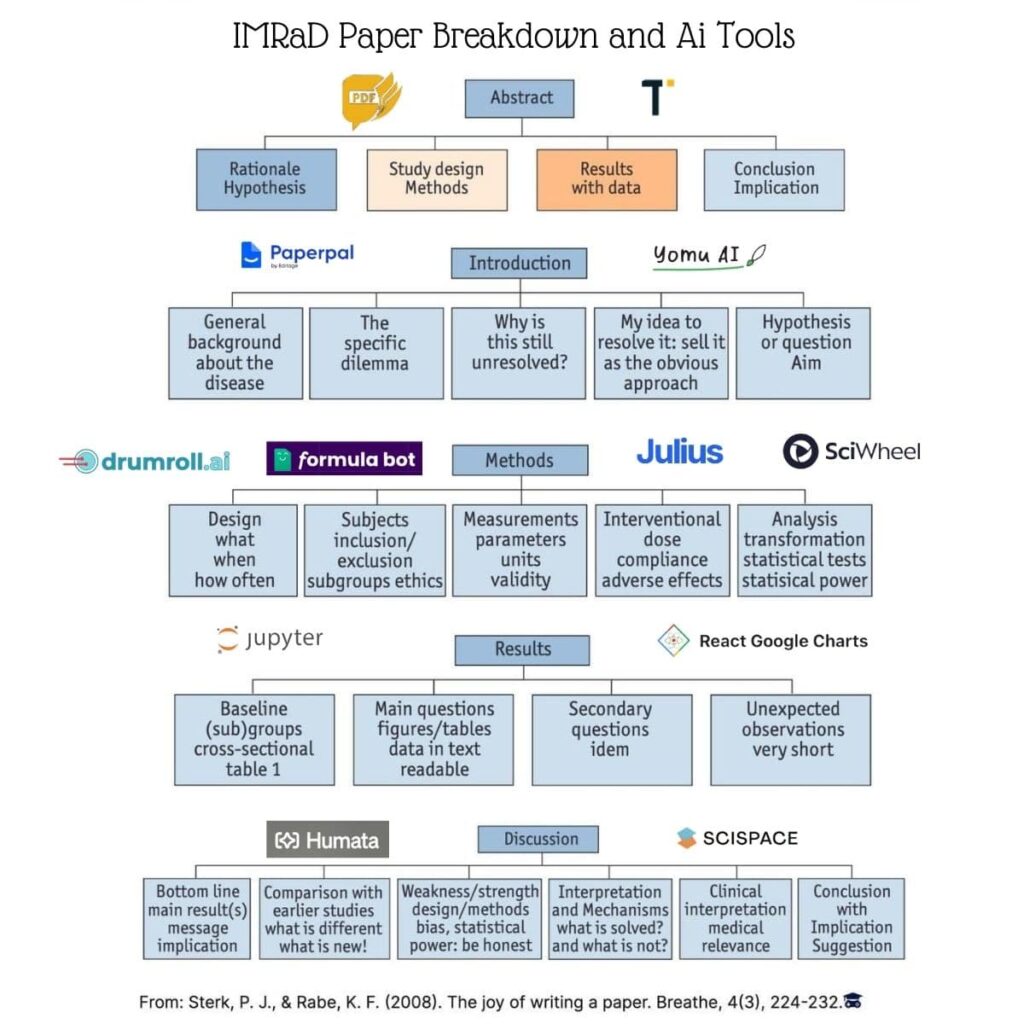
The IMRaD format, standing for Introduction, Methods, Results, and Discussion, is the backbone of academic writing in the sciences and beyond. It simplifies the presentation of research findings, creating clarity for readers and researchers alike. But writing such papers can be overwhelming, even for seasoned professionals. Luckily, advancements in AI have made this task more manageable.
This blog will explore the IMRaD paper structure in detail and how AI tools can streamline the research process, from brainstorming to the final draft.
What is the IMRaD Format?
The Four Key Components of IMRaD
AI Tools for Each Section of IMRaD
How AI Tools Enhance Research Efficiency
Step-by-Step: Writing an IMRaD Paper Using AI Tools
Conclusion: Embracing AI for Smarter Research
The IMRaD format is a standardized approach to presenting scientific findings. It structures papers into four clear sections: Introduction, Methods, Results, and Discussion, with an abstract and conclusion often added. Its strength lies in its logical flow, making it easier for readers to follow complex research.
This section sets the stage for your research, answering key questions:
Detail the “how” of your research:
Summarize the data collected during the research. Tables, charts, and statistics shine here to visually present the findings.
Interpret the results, compare them to previous studies, highlight strengths and weaknesses, and propose future directions for research.
The IMRaD process, though clear, can be tedious without the right tools. AI platforms have revolutionized research writing. Let’s explore how these tools help at every step.
Abstract: PDF.ai and Yomu AI
Introduction: Paperpal and Yomu AI
Methods: Drumroll.ai, Formula Bot, Julius, and SciWheel
Results: Jupyter and React Google Charts
Discussion: Humata and Scispace
Time-Saving
AI automates tedious tasks like data analysis, formatting, and editing, saving hours of manual work.
Improved Accuracy
From ensuring statistical correctness to maintaining linguistic clarity, AI minimizes errors.
Enhanced Collaboration
Platforms like Julius and SciWheel foster collaboration among researchers, streamlining workflow.
Better Insights
Tools like Humata and PDF.ai extract meaningful insights from vast datasets, enabling informed decision-making.
Step 1: Begin with the Abstract
Step 2: Develop the Introduction
Step 3: Structure the Methods Section
Step 4: Present Results Visually
Step 5: Write the Discussion
The IMRaD format remains the gold standard for scientific communication. But as research becomes more complex, AI tools offer an essential lifeline. Whether it’s summarizing previous work, automating calculations, or visualizing data, these tools empower researchers to focus on innovation rather than administrative tasks.

Dr. Chopra is the founder and editor of thephdcoaches.blogs and Thephdcoaches Learn more about her here and connect with her on Instagram, Facebook and LinkedIn.
Dr. Tripti Chopra, founder of The PhD Coach, is an award-winning mentor and leader in integrating AI into academic research, with over a decade of experience guiding PhD students and researchers. Her work revolutionizes research processes, promotes sustainable writing practices, and inspires scholars to embrace technological advancements.
Copyright© 2023 Thephdcoach All rights reserved.
Leave a Comment